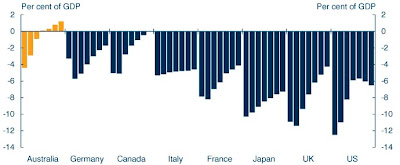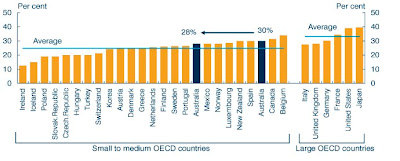



Budget Overview
What I wrote on Budget Day: Aid;
The story behind the $1 billion is that Australia has promised to increase development aid to 0.5 per cent of its Gross National Income (as I explain here (link to critique of Henry Review from last week), National Income and not the more commonly used Domestic Product is the right basis for most calculations. Unfortunately for the government (at least in this instance), a recent agreement by statistical agencies has changed the way GNI is calculated. Australia’s statisticians were the first to implement this change, and the result was to increase our GNI by 4 per cent, or about $50 billion.
Budget 2010 – It’s no Sex & The City 2
Federal budget 2010-11 – a sad document
Overall score: 4/10 – too much emphasis on the surplus and not enough emphasis on jobs and living standards.
Generating a Social Surplus;
Too often when evaluating the budget, we tend to focus on the accounts. To be sure, making sure the government has enough revenue to pay the bills is central to the process. But at its core, it is about economic policy-making. So on that level, we need to think broadly about economic benefits and costs.